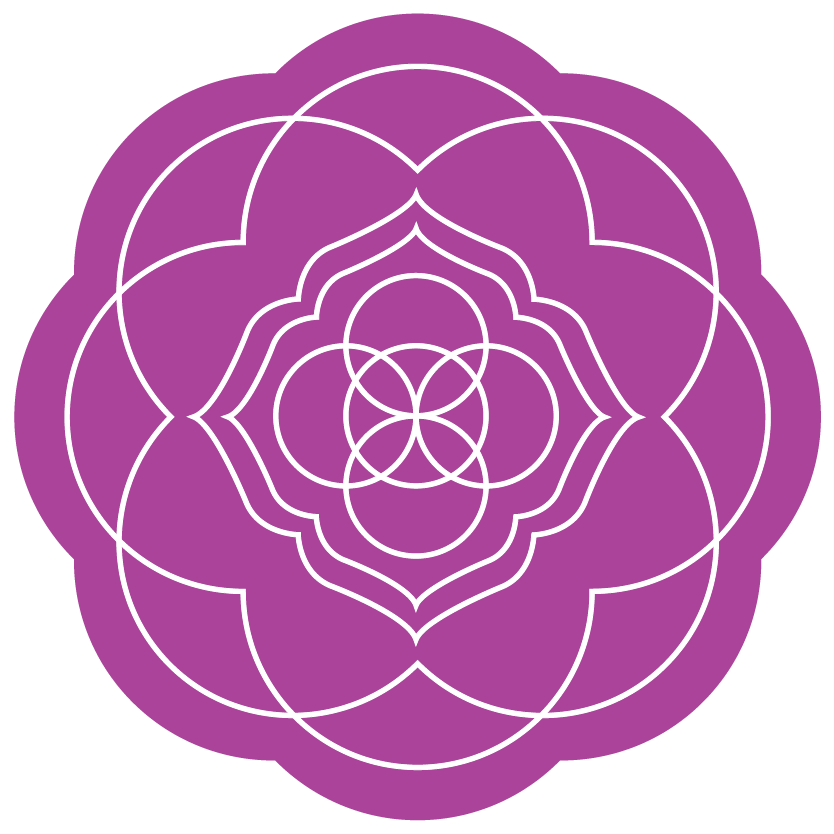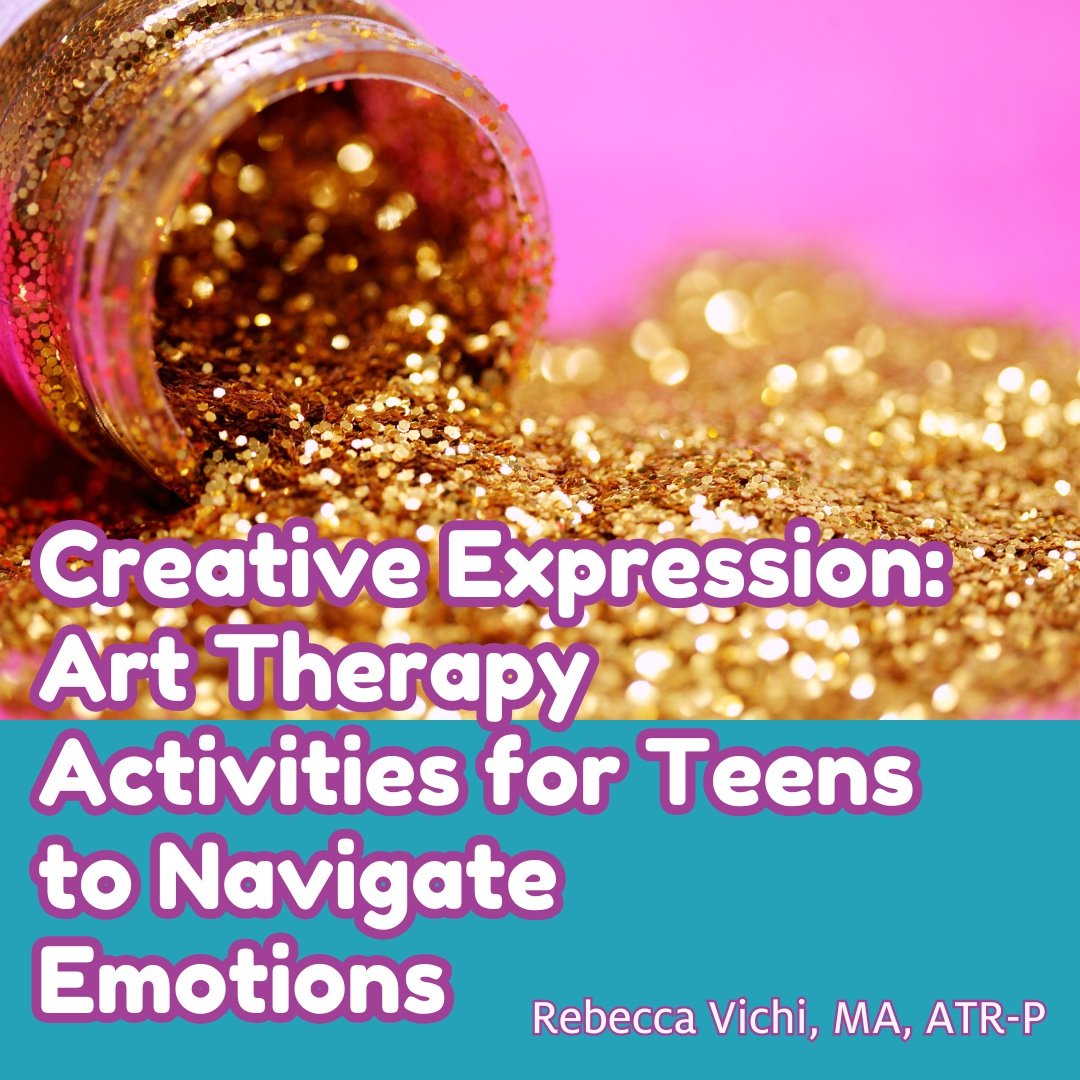5 Best Art Therapy Activities for Teens to Navigate Emotions
By Rebecca Vichi, MA, ATR-P
Emotional expression can be difficult for anyone, especially for those that might be experiencing additional mental health related concerns. Emotional expression through art is a great way to explore and release feelings and experience acceptance as we allow emotions to pass through our bodies and brains freely. By utilizing art therapy methods, we move away from repressing and pushing emotions away. When we do not have the tools or tolerance to explore ourselves it can feel scary, but if we don’t these feelings may come back even stronger.
In this post we will go through some art therapy activities for teens and young adults to navigate emotional expression. While this post is aimed at teenagers and young adults, art is for everyone and each of these techniques can be adapted based on age and needs.
The Benefits of Art Therapy for Teens
Before we get started, I think it is important to define emotional regulation. Emotional regulation is the ability to track and manage one’s emotional experiences. The ability to regulate emotions often increases with age, however, if you’ve never learned how to regulate and define emotions as a child, it might feel harder to navigate as a teenager, young adult, or older adult. Art therapy is a creative process used to “loosen up” emotional barriers, create new neural pathways, and explore the roots of where these emotions might be resting. Not only is art an investigative tool, but there is also an emotional catharsis, or release, that comes with using different materials, mediums and artistic expression. This type of release can free you up to feel more emotions that you’d like to feel and find the positive in more difficult emotions.
Art therapy naturally encourages self expression, which can help teens build confidence and foster connections. It’s also a coping skill that teens can turn to in times of stress, or to prevent emotions from building and becoming overwhelming.
Below are some specific art therapy activities that I recommend trying to allow for greater emotional expression and emotional regulation.
Art Therapy Activities/Ideas for Teens
#1 - Feelings Map
Materials: paper and colored pencils or markers
Step 1: For this activity, you will represent anger, joy, sadness, love of others and love of self. Pick one color for each feeling. Then take the time to visualize what each emotion’s size and shape looks like.
Step 2: When you are finished, reflect on if any of the images are connected. Are there any common shapes, sizes, or lines? What did you spend the most time on? Did one feel easier or more difficult to create? How does it feel to see all of these emotions out in front of you?
When finished with reflection, this map can be used as a way to help the individual identify and share emotions with family members, friends, therapists, doctors, etc. This activity as a whole can also be used as a tool. If the individual is feeling dysregulated or highly emotional this can be used as a way to slow down and reflect on your internal state.
#2 - Emotional Landscape
The emotional landscape is a directive that allows you to reconnect with your feelings if you are feeling numb or dysregulated. It helps you recognize that our emotional states change and fluctuate and that not only should we enjoy the times in which we feel happy, but that we can also endure and face emotional pain. The emotional landscape allows you to appreciate emotions and reminds us that we can treat each all emotions with grace and compassion. The hope is that we can transition from a state of numbness into a state of feeling and treat any emotions we may experience with kindness.
For the activity, you will be creating landscapes. In the first one you will be identifying any current feelings or lack thereof and in the second you will create a metaphorical change. You will need two pieces of paper and can choose to use colored pencils, oil pastels, or watercolor paint.
Step 1: Start with a body scan and tap into what you are feeling. When you are done imagine a type of outdoor landscape that reflects your internal state along with climate and weather conditions. Create your landscape and allow it to evolve.
Step 2: On a piece of paper describe how a person would feel standing in different areas of your landscape while referring to emotional and physical sensations and what a metaphorical person might be doing in this place. Then list all the features in the landscape and match them to a feeling.
Step 3: Imagine a change in the landscape. Create the second landscape.
Step 4: On a piece of paper describe how a person would feel standing in different areas of your landscape while referring to emotional and physical sensations and what a metaphorical person might be doing in this place. Then list all the features in the landscape and match them to a feeling.
Step 5: Place them side by side and process both images. Think about how it feels to accept both states and how each state is a protective factor. Then consider if you would prefer being in one over another. Process how you can move back and forth with emotional regulation skills.
#3 - Glitter Shaker
Materials: Jar, hot water, glitter glue, sequins, glitter, beads
Step 1: In the jar add glitter glue and water. The more water you add the thinner the mixture will be. Play with the glitter glue and water until you have desired consistency.
Step 2: If you wish, you may in regular glitter, sequins, beads, etc.
Step 3: Close the jar tight and shake it to combine everything.
Step 4: Watch as the glitter settles.
This activity is a tool that can be used for frustration, anger, emotional regulation and mindfulness. If you are feeling upset, you can shake the jar hard to stir up the mixture and then you have the opportunity to regulate, breathe and relax as you watch the glitter spin and settle. The act of creating the jar and playing with glitter can also bring happiness and joy and allow you to make a mess without consequence.
#4 - How Do I Feel?
Materials: 2 pieces of paper, crayons or colored pencils
Step 1: Take the first piece of paper and present the question “how do I feel?.” Using doodles, abstract shapes, and images represent your internal state. Pay attention to the feelings in your body, represent any tension, anxiety, or anger. Explore the image.
Step 2: Participate in a relaxing guided meditation. The goal of this meditation should be tension release and cutting cords.
Step 3: Engage in art making again. Ask yourself the same question, “how do I feel?” Using doodles, abstract shapes, and images represent your internal state and whatever came to them during the meditation. Explore the image and process. Is there one element in the second image the individual wants to explore deeper? How did it feel to acknowledge both states? How was the transition of one state to another?
#5 - Layered Feelings
Materials: 2 pieces of paper, oil pastels, 7 sheets of wax paper, glue
Step 1: On the first piece of paper answer each of these questions with a feeling word
A feeling you often reveal to others
A feeling you often keep to yourself
A feeling that has increased in frequency lately
A feeling you wish would go away
A feeling you like to have
A feeling you can with with but challenges you
A feeling you rarely experience and wish you could have more
Step 2: Select one oil pastel color to represent each feeling you listed and make a key.
Step 3: Represent each of the feelings by drawing lines/shapes with the color chosen on separate sheets of wax paper leaving a 2 inch unused border around the edges of the wax paper.
Step 4: Stack the pieces in an order that feels correct to you. Take time to play and explore the order.
Step 5: Glue each piece of wax paper together along the top edge and the bottom piece to the white paper. Trim edges if necessary.
Step 6: Explore each feeling on each layer and how you decided to represent them symbolically. Describe the colors, shapes, and lines.
Step 7: Describe what you can see when you look at the art work as a whole
What feelings are most noticeable?
What is on top and bottom?
What feelings are hidden?
Notice relationships between feelings by lifting sheets one at a time.
How does this artwork reflect ways in which you experience emotions?
It is important to explore the range of emotions you can experience so they can be understood and expressed. This allows you to accept even hard emotions without judgment and acknowledge they will pass and not prevent you from also experiencing pleasant emotions. Cooperation can lead to empowerment while pushing them away or down could drain your energy and make them come back even stronger. This activity will help you understand the diversity of emotions and the degree to which one can tolerate these feelings.
Conclusion
Overall, exploring emotions can help promote a sense of agency over oneself. When we aren’t able to identify and accept our internal state it can be overwhelming, lead to dysregulation, and can even lead to a loss of control over our own lives. Using art adds to agency because we have the power to choose colors, shapes, and images that they identify with. Through the power of color and material art has the power to elicit emotional responses that we might not be able to get through talking.
References:
Cohen, B., Barnes, M., & Rankin, A.B. (1995). Managing traumatic stress through art: Drawing from the center. Sidran Press
Darley, S. & Heath, W. (2008). The expressive arts activity book. Jessica Kingsley Publishers.
-
There are people of all ages who gravitate towards art therapy! But it can be especially helpful for children and teens, as it provides another medium for self expression. It can be difficult for children and teens to simply sit down and "talk" to a therapist. Art therapy overcomes that challenge and can be fun!
-
At Balanced Awakening, the way we do art therapy is intertwined with the lens of traditional psychological therapy. So our art therapy can replace traditional psychological therapy.
-
Art therapy can be adapted and adjusted for anyone at any ability or age level. The way that it is adapted will depend on the specific person's needs. Fortunately, we have a lot of creative options in art therapy!
-
As much as you want or feels right to you! If you are working with an art therapist, you might see the art therapist weekly, and also work on some art therapy activities in your free time outside of sessions.
-
Totally! Adults can have a lot of fun with these art therapy activities for teens, and may find them just a fruitful in helping with coping, emotional regulation, and self expression.


